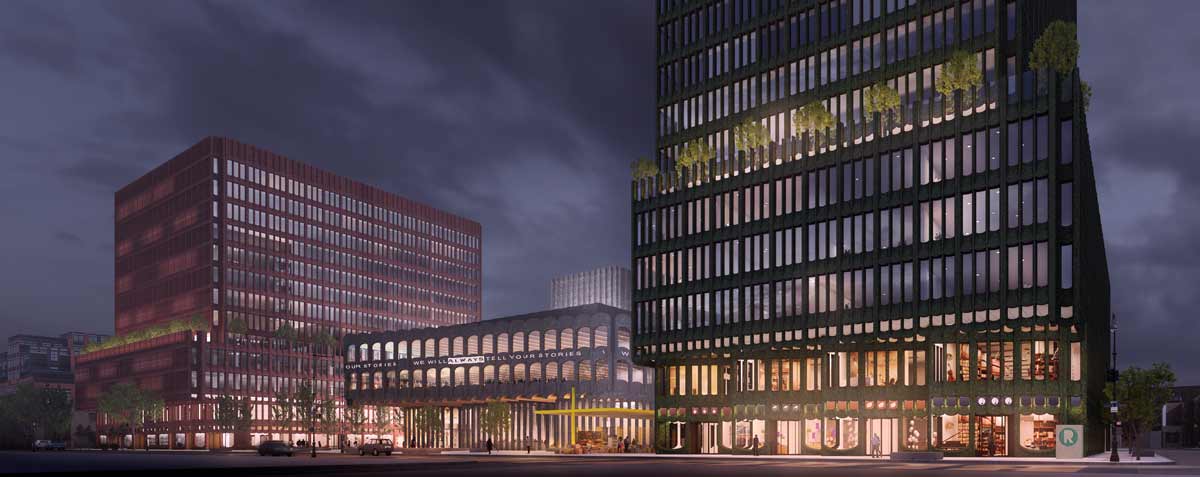Phoenix Rising – From Restoration to Innovation
At some point in the development process, the grounds along Tubman/Fulton St. between Brooklyn and New York Avenue will look like an empty cavity, but the root canal work is something leaders say is sorely needed.
As the future comes, Central Brooklyn, they are saying, will be ready to meet it with this new anchor evolving from the old.
“Bedford Stuyvesant Restoration Corporation created the space (it occupies) half a century ago as an antidote to neighborhood blight,” reported The City in a January 18, 2023, article reprinted in Our Time Press.
For some, it was a place where one could go to get relief from the ills without leaving the neighborhood. A solid brick-and-mortar place where needs were discussed and worked on, and people found jobs, were educated, banked, dined, businesses found homes, a mini village unto itself.
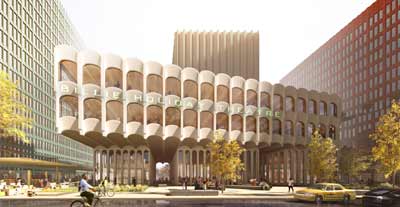
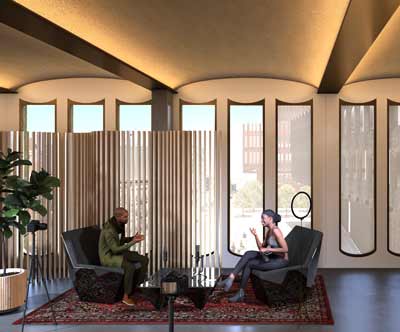

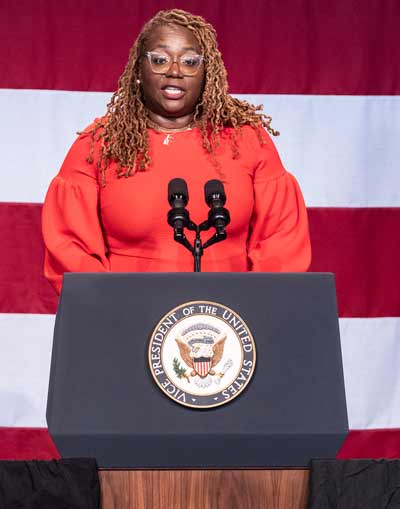
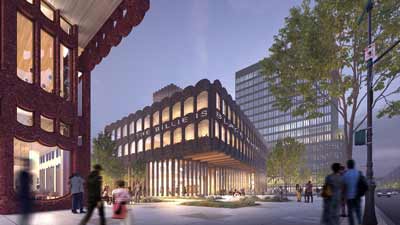
History was made in that center. It was the first neighborhood-based community corporation in the nation. Now it’s headed to be at the forefront of one of the nation’s greatest ills – the racial wealth divide.
Last month, Restoration announced: the unveiling of plans to reimagine its Fulton Street headquarters as a global hub dedicated to disrupting the divide – a capital offense — that is threatening America.
With the focus on Black wealth creation, says Blondel Pinnock, President, and CEO, of Restoration, “The Restoration Innovation Campus will usher in a new chapter for the nation’s first nonprofit community development corporation. The Campus will modernize and expand space for current tenants and provide new offices for mission-aligned partners committed to disrupting the wealth gap. But the heart of the site will be dedicated to our cultural center and our public gathering space.”
Last week, Pinnock explained to OTP that Restoration, under a new name, Innovation, will not only join the national conversation on wealth inequity but help direct and anchor it through example.
Vice President Kamala Harris visited the site in the summer 2022, and stated during a press conference, “All across our nation, there are places like Bed-Stuy — reservoirs of ambition and aspiration — just waiting to be tapped.”
“Central Brooklyn is a microcosm of racial inequities reflected nationwide across our cities,” said Pinnock.
“For 55 years, Restoration has helped lift thousands of residents out of poverty and created countless opportunities in our community. Now, the nation’s staggering racial wealth gap requires a bold, new approach—to harness Brooklyn’s economic growth to support wealth creation for our neighbors, particularly longtime residents and people of color. With its focus on Black wealth creation, the Innovation Campus will offer a new, replicable model for closing the wealth gap in communities across the United States. We look forward to working with our business partners and neighbors, local elected leaders, and the residents to close the divide and set in motion the realization of this critical vision for the generations who will come after us.”
To further demonstrate its community-based, globally focused approach to economic mobility, Restoration selected world-class architect David Adjaye and his team to lead the design-build. We see his effort as tasked with actualizing the late leader Elsie Richardson’s vision of a brick-and-mortar sanctum-for-the-people.
Adjaye designed the National Museum of African American History and Culture, and as with all of his designs, he listens to members of the community, respecting them as-co-designers in the process. As seen on these pages, his work reflects Restoration’s mission and residents’ feedback on what they wanted in the space. (This input was gathered in a community visioning process in 2019, where four top priorities emerged: (1) increasing the visibility of the arts programs; (2) expanding job and educational opportunities; (3) improving the open space; and (4) bringing in mission-aligned retail)
The 840,000-square-foot vision will enable Restoration to meet the needs of the community today. It includes a major expansion of Restoration’s cultural center and the Billie Holiday Theatre, new public open space, and two commercial buildings that will provide world-class new offices for both current tenants and private, nonprofit, and government partners committed to disrupting the racial wealth gap, says Ms. Pinnock.
The mixed-use vision would expand Restoration’s innovative direct services model, comprising a set of economic mobility and arts education programs that today provide critical resources to more than 60,000 Central Brooklyn residents. New space would be used to scale programs such as the Restoration Software Engineering Fellowship in partnership with The Marcy Lab School and to foster similar programs with other companies invested in advancing skills training and job placement for residents in high-growth sectors.
“The design of Innovation Campus taps into Bed-Stuy’s vibrant culture to create a place-based model to disrupt the racial wealth gap,” said David Adjaye. “Based on extensive community engagement sessions, the design scheme prioritizes the public realm and ensures dedicated space for collaboration between mission-aligned partners. We look forward to seeing the campus become a reality and model for others as Restoration moves the transformative plan forward.”
More on the process, Mr. Adjaye and Ms. Pinnock in upcoming Our Time Press issues through next month, as we approach April’s National Observances of Architecture and Landscaping and April Earth Month. (To Be Continued)

